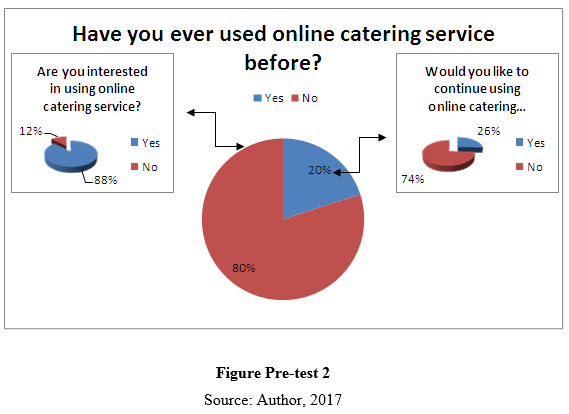MARKET SEGMENTATION IN THE ONLINE CATERING INDUSTRY (3)
By; Tifanny Tandy, SE (Alumni of International Marketing) & Annetta Gunawan, SE, MM (Faculty Member of International Marketing)
Previous article: MARKET SEGMENTATION IN THE ONLINE CATERING INDUSTRY (2)
For the purposes of advertising, targeting is the process of communicating with the right segment(s) and ensuring the best possible response rate. The methods you use to target your audience must relate to your marketing plan objectives.
In nature, evolution occurs most rapidly when competition for resources is intense. The same process is now occurring with promotional media. All traditional media channels are now saturated, and competition for consumer attention is intense. At the same time, the impact of any one medium is becoming diluted. There are many more TV and radio channels, consumer have the ability to skip adverts and free information is now much more accessible. As a result, companies are becoming increasingly innovative in their approach to communications and a host of new media channels have emerged. As a result, media choice is becoming a tricky task, which is why detailed segmentation is so important – it’s no use starting a Twitter campaign if none of your target market are regular users of the site.
Highly targeted communications often lead to better results. You can usually expect a response rate of under 1% for a relatively generic mass mailing. However, personal letters to a handful of your most loyal customers would lead to a dramatically increased rate of return. When deciding which media to use consider the reach, frequency, media impact and what you can expect for your budget but most of all, ensure your target customer will see the message in the first place. Media choice is a matter of compromise between volume of people versus the personalisation of the message. (Jon Gibson, 2015)
According to conducted survey, consisting of 19 workers and 36 students, it was reported that 58% felt the need of catering during work/school time, and 42% did not. Most of the respondents, 80%, had never used online catering, and out of the 20% that used the service before, only 26% would like to re-use the service. The rest of 74% stated that online catering service was not flexible, too expensive, or they preferred home-cooked meals. For the 80% of those who never used online catering, 88% of them were interested in trying the service. Whereas the rest of 20% were unwilling for the reasons of inconvenience, lack of quality assurance, and other personal reasons. It is shown how a big part of the target market who had not tried the service was actually interested in using indicating very great potential market. On the other hand, most of those who had tried the service were reluctant to repurchase or reuse it. This indicates a great field to improve in customer retention.
It can be concluded that even in the target market of workers and students, their characteristics, such as demography, behavior and psychographic, might differ. For demographic, the variables are age, gender, income, occupation, online experience, and online time. For behavior, the variables are price level, trust degree, and interpersonal communication. For psychographic, the variables are shopping methods, experience, dining quality, internet enjoyment and convenience, internet offers, internet logistic, and internet self-efficacy. It can be seen from the survey, that most of the target market had not fully recognized the service of online catering, which require the company to design the right promotional plan to reach the market.
In short, with the rapid increase of e-commerce supported by Indonesian’s habit of spending great expense on food, many companies or entrepreneurs are emerging in the online food industry, one of them the catering service. In a business, there is a great risk in doing promotion without knowing the target market.
To be continued to: MARKET SEGMENTATION IN THE ONLINE CATERING INDUSTRY (4)


